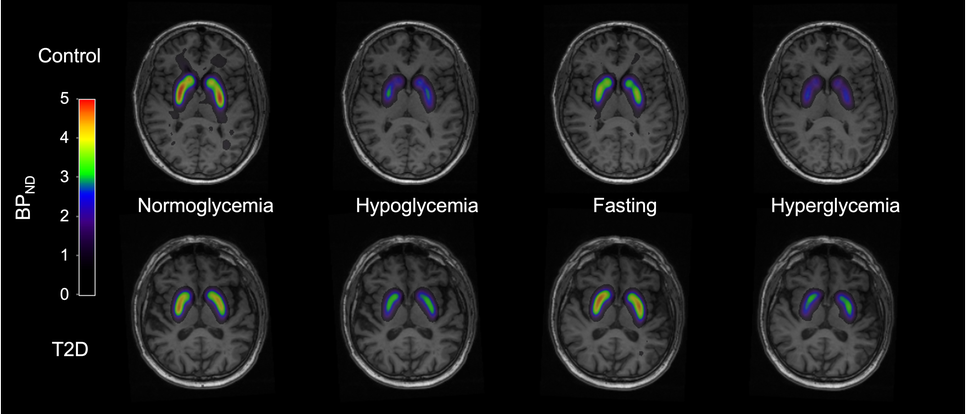Neuroendocrine regulation of glucose homeostasis

Energy and glucose homeostasis are extremely complex physiological phenomena, and many actors in the body are involved: organs, tissues, hormones, neural networks. Much is still to be discovered. We use cutting-edge investigation techniques to better depict the mechanisms that lead to obesity, metabolic syndrome, and type 2 diabetes, performing experiments on rats and humans integrating metabolic, neuroimaging, and molecular assessments.
Project description
The role of the brain in the control of glucose homeostasis is getting more and more attention. Specialized neurons located in the hypothalamus can trigger hormonal and autonomic responses that regulate glucose circulating levels when they deviate from the homeostatic set-point – pretty much like a thermostat. Our hypothesis is that the set-point of this glucostat is gradually shifted upwards in individuals developing type 2 diabetes and that this shift contributes to the onset and the progression of the disease.
In this project, we are performing so-called clamp experiments through which we lower or raise glucose levels and measure hormonal levels and nerve activity. We are also combining these experiments with imaging techniques such as PET and MRI to observe the brain response to varying levels of circulating glucose. These experiments are performed in lean and overweight individuals with and without type 2 diabetes. Some individuals that undergo obesity surgery are also examined after the operation.
So far, we have supported our hypothesis by showing that overweight individuals have higher glucose-raising response than lean subjects. We have also found altered brain activity in responses to varying blood glucose levels in obese individuals. We are now focusing on the differences of dopamine signalling in the brain between individuals with and without type 2 diabetes.
Chosen publications
Lundqvist MH, Almby K, Wiklund U, Abrahamsson N, Kamble PG, Pereira MJ, & Eriksson JW. Altered hormonal and autonomic nerve responses to hypo- and hyperglycaemia are found in overweight and insulin-resistant individuals and may contribute to the development of type 2 diabetes. Diabetologia 2021 64 641–655. 10.1007/s00125-020-05332-z
Almby KE, Lundqvist MH, Abrahamsson N, Kvernby S, Fahlström M, Pereira MJ, Gingnell M, Karlsson FA, Fanni G, Sundbom M, Wiklund U, Haller S, Lubberink M, Wikström J, & Eriksson JW. Effects of Gastric Bypass Surgery on the Brain: Simultaneous Assessment of Glucose Uptake, Blood Flow, Neural Activity, and Cognitive Function During Normo- and Hypoglycemia. Diabetes 2021 70 1265–1277.
